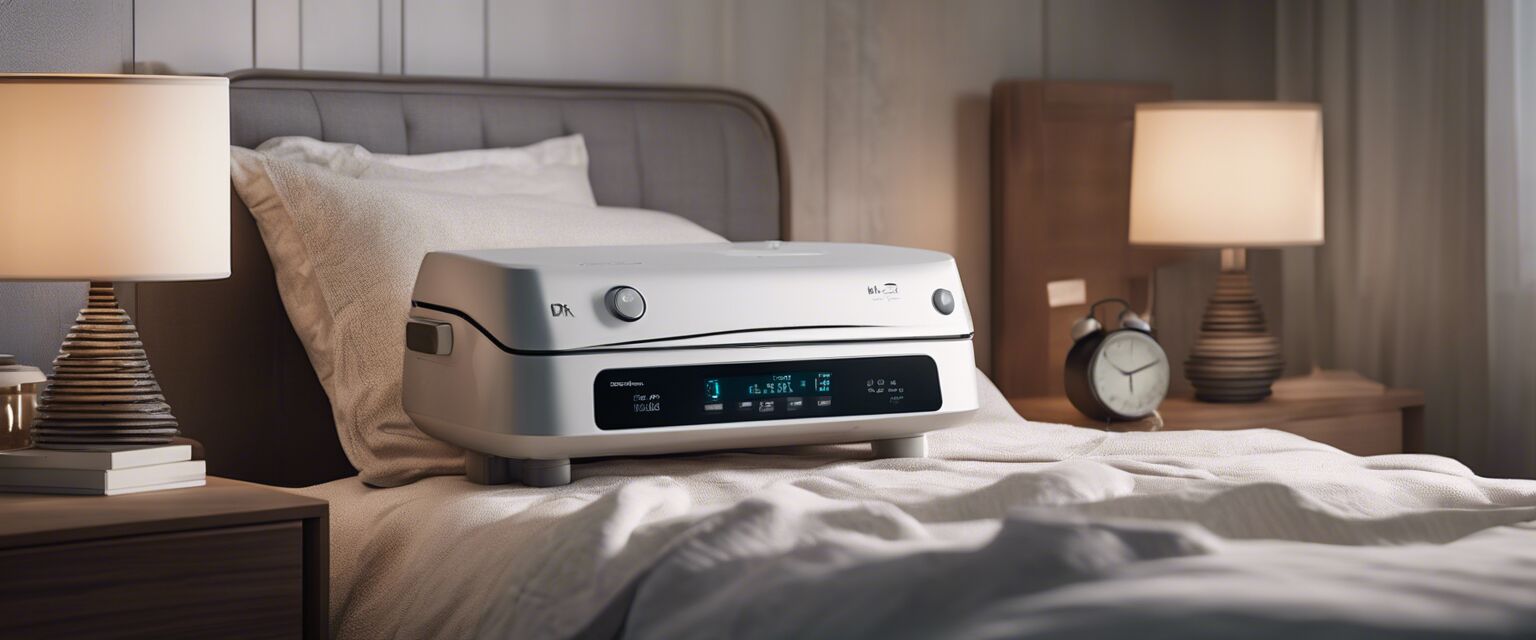
Lifestyle Changes for Sleep Apnea
Sleep apnea is a common sleep disorder that affects millions of people worldwide. While CPAP machines and other medical devices can be effective in managing the condition, making lifestyle changes can also play a crucial role in reducing symptoms and improving overall health.
Key Takeaways:
- Weight loss can significantly reduce sleep apnea symptoms
- A healthy diet rich in fruits, vegetables, and whole grains can help
- Regular exercise, especially yoga and cardio, can improve sleep quality
- Avoiding alcohol, caffeine, and nicotine can reduce sleep apnea severity
- Creating a sleep-conducive environment can promote better sleep
Weight Loss and Sleep Apnea
Excess weight is a common risk factor for sleep apnea. Losing weight can significantly reduce symptoms and improve overall health. Even a 10% weight loss can make a big difference.
| Weight Category | Sleep Apnea Risk |
|---|---|
| Normal Weight | Low |
| Overweight | Moderate |
| Obese | High |
Dietary Changes for Sleep Apnea
A healthy diet rich in fruits, vegetables, and whole grains can help reduce sleep apnea symptoms. Avoid processed and high-calorie foods that can exacerbate the condition.

Exercise and Sleep Apnea
Regular exercise, especially yoga and cardio, can improve sleep quality and reduce sleep apnea symptoms. Aim for at least 30 minutes of moderate-intensity exercise per day.
- Nasal strips and aids can also help improve breathing during exercise
Avoiding Stimulants and Sedatives
Avoiding alcohol, caffeine, and nicotine can reduce sleep apnea severity. These substances can relax the throat muscles, making it harder to breathe during sleep.

Creating a Sleep-Conducive Environment
Creating a sleep-conducive environment can promote better sleep and reduce sleep apnea symptoms. Make sure your bedroom is dark, quiet, and cool, and invest in a comfortable mattress and pillows.
- Sleep positioners can also help improve sleep quality

Benefits of Lifestyle Changes
- Improved sleep quality
- Reduced sleep apnea symptoms
- Weight loss and improved overall health
Challenges of Lifestyle Changes
- Difficulty in making significant changes to diet and exercise habits
- Need for ongoing commitment and motivation
Beginner's Tips:
- Start with small changes to your diet and exercise habits
- Consult with a healthcare professional before making significant changes
- Track your progress and celebrate small victories








